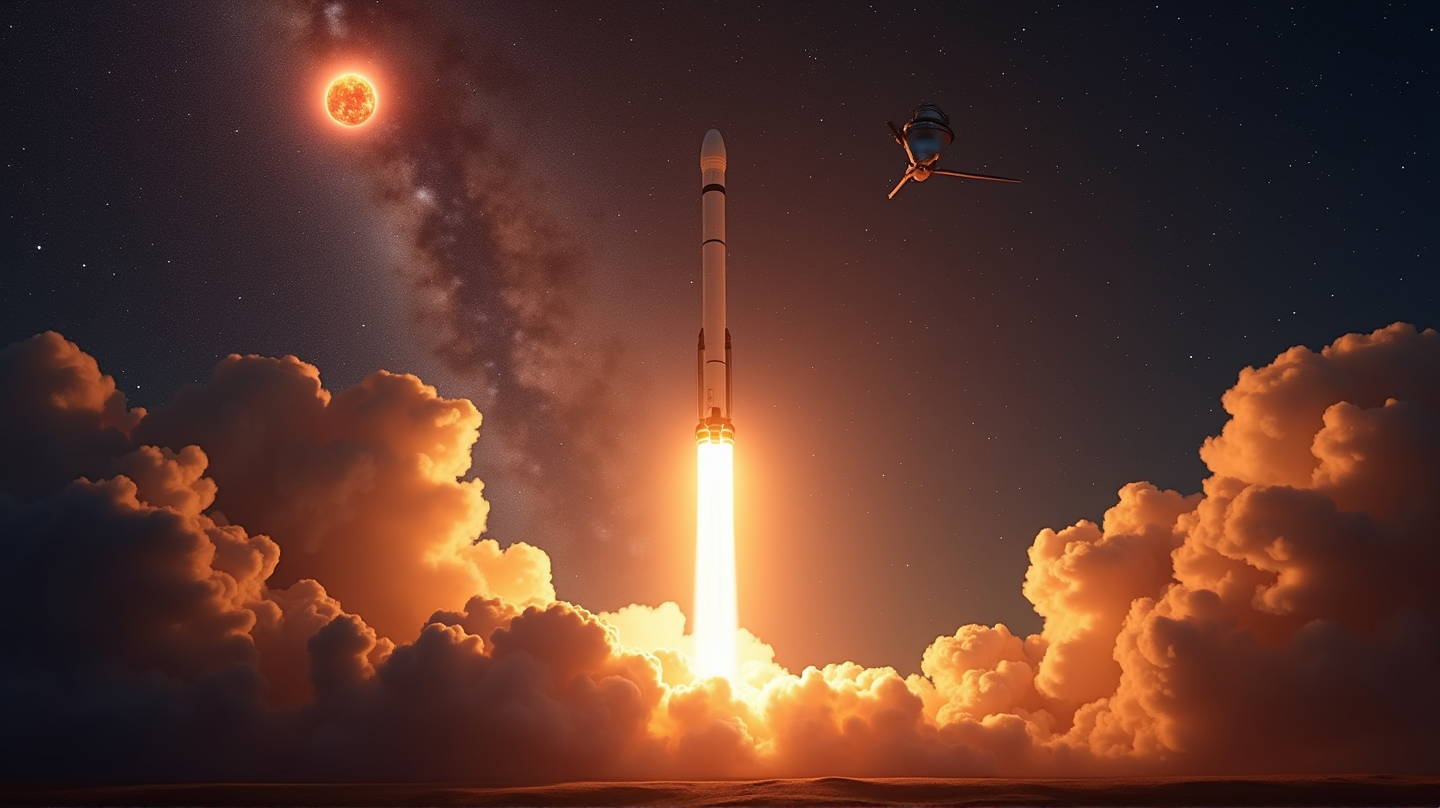New Space Weather Mission Set to Transform Our View of the Cosmos
NASA & SpaceX launch a pivotal mission addressing space weather's earthly impacts, enhancing safety for future cosmos expeditions.

It’s a thrilling time in the realm of cosmic exploration. As stated in BGR, NASA has teamed up with SpaceX and NOAA to embark on a groundbreaking mission aimed at mapping space weather. This initiative is poised to unlock the mysteries of interstellar conditions and their effects on life here on Earth. What exactly is space weather? It’s the intricate dance of solar phenomena, like solar flares and winds, that can disrupt our technologies and lives. Imagine a cosmic storm where our very own GPS signals could flutter away like leaves in the wind - that’s what this mission is scrutinizing.
Launching the Frontlines of Space Exploration
On a pivotal day, September 24, 2025, the great engines of a SpaceX Falcon 9 rocket roared to life, catapulting three crucial crafts into the void. Each carries its destiny, intent on sketching the boundaries of our protective heliosphere. Among these pioneers is the Interstellar Mapping and Acceleration Probe (IMAP). It promises to unravel how the solar winds serve as Earth’s celestial guardians against cosmic radiation. The second traveler, the Carruthers Geocorona Observatory, has its lenses trained on the far reaches of our exosphere. We stand to learn how solar storms ripple through the layers that encase our planet.
But the jewels in this cosmic crown must include NOAA’s SWFO-L1, a vigilant sentry in the skies. It mirrors our earthly meteorological setups—a watchtower in the stars. Its eyes are trained to catch the slightest stirrings of space weather upheavals, ensuring our safety.
A Global Ensemble for Celestial Insights
This mission signifies a remarkable collaboration, a testament to unity in exploration. Key figures are spearheading these missions, such as David McComas of Princeton University leading IMAP’s exploration and Lara Waldrop at the helm of the Carruthers Observatory. Not to be left behind, NOAA’s keen endeavors focus on SWFO-L1 with a piercing gaze fixed on the vast expanse. Together, they weave a tapestry of science, scrutinizing the largest solar flare recorded since 2017.
In Washington’s heart, Dr. Nicola Fox echoes the nation’s aspirations, laying out a vision of celestial journeys. With vigor, she casts a future where humanity returns to the Moon, quests for Mars, and navigates the stars armed with a “know-before-you-go” guide.
Paving the Path for Tomorrow’s Explorers
As the spacecraft journey to their destined orbit, they pave a new path, guiding a multitude of future space missionaries. The celestial winds carry whispers not just of knowledge but of safety and preparation. This saga unfolds with partnership, intellect, and a spirit of adventure.
In essence, NASA’s latest mission is much more than a mere scientific endeavor; it’s our passport to understanding the skies above and protecting our world below. With every transmission received, we move one step closer to becoming dwellers of the universe, informed and equipped for the limits beyond.

